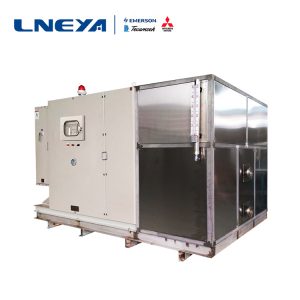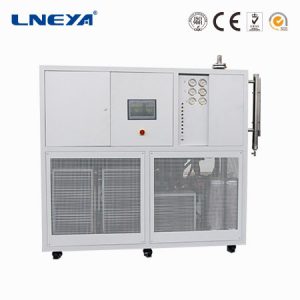電気自動車用バッテリーの作動温度試験
The normal working temperature
range of power batteries for electric vehicles is -30 ~ 52 ° C, and the working
temperature range is -46 ~ 66 ° C, which is difficult to achieve with existing
power batteries. Although local warming measures can be used for battery packs,
they increase costs. Each type of battery has an optimum operating temperature
range, beyond which battery performance will be reduced or impaired. Therefore,
before the production of power batteries, manufacturers need to perform related
temperature tests or inspection agencies to perform similar tests.
The cooling and heating
system components of electric vehicles must be tested at different pressure
levels and temperatures. The performance and power consumption of these systems
must be tested to ensure that they do not significantly reduce the mileage of
the vehicle. In a typical test, a complete auxiliary heater or component, such
as a valve, hose, and other hollow valve, is inserted into a test slot on a
pressure cycle table.
A cooling circuit is
usually tested in a temperature range of minus 40 to 20 degrees, while a
heating circuit is tested in a temperature range of 20 to 140 degrees. Power
consumption and performance are usually tested at alternating temperatures.
Low-voltage or high-voltage power sources can be selected, and operation can be
simulated with on-board batteries and generators or traction accumulators. In
many electric vehicles today, heating and cooling systems can drain the
battery, negatively affecting the mileage of the car. By comparing the test
results before and after the load test on the pressure cycle test bench, we can
see how the change in battery power consumption and performance affects the
service life of the vehicle.
A comprehensive
long-term test usually takes 20 to 30 days, depending on how often the load
changes. The temperature and volume flow of the test medium and the ambient
temperature (if the test takes place in a climatic chamber) vary according to
the test specifications. The temperature and flow rate, pressure, and pressure
drop of the inlet and outlet of the test object circuit are continuously
measured. The test here focuses on the thermal and electrical performance of
the heating and cooling device under different environmental conditions.
Lneya’s new energy battery cooling
and heating system KRY series is widely used in production lines or testing
departments of related companies in China. The temperature control precision is
high, and the single fluid medium temperature control saves resources and
costs.
(The relevant information comes from the
Internet. If you have any questions, please contact the editorial department.)
関連推奨品
-
有機廃棄物ガス処理装置の騒音説明
1390環境に対する要求がますます厳しくなる中、様々なメーカーが自社の有機廃ガス処理にますます注目しています。LNEYA有機廃ガス処理装置は、様々な臓器・...
詳細を見る -
バッテリーパック冷却水装置 チラー使用上の注意事項
963バッテリーパック冷却循環水機チラーは、新エネルギーバッテリーパックの冷却システムに使用されます。電池パック冷却循環水機チラーは、新エネルギー電池パック冷却システムに使用され、使用者は操作中に誤用を避けるために注意を払う必要があります。
詳細を見る -
SUNDI 冷暖房システム 有機合成素材とファインケミカルの研究開発試験
1238LNEYA社の顧客は、高性能で環境に優しい有機新素材やファインケミカルの研究開発・製造に携わる研究機関である。
詳細を見る -
Application of Industrial Air-Cooled Chiller in Chemical Industry
1185Industrial air-cooled chillers are applicable to glass reactors, metal reactors and bioreactors for temperature control. In the field of chemistry and pharmacy, air-cooled chillers usually carry out necessary temperature control together with the ...
詳細を見る
 LNEYA工業用冷凍機 メーカー サプライヤー
LNEYA工業用冷凍機 メーカー サプライヤー













